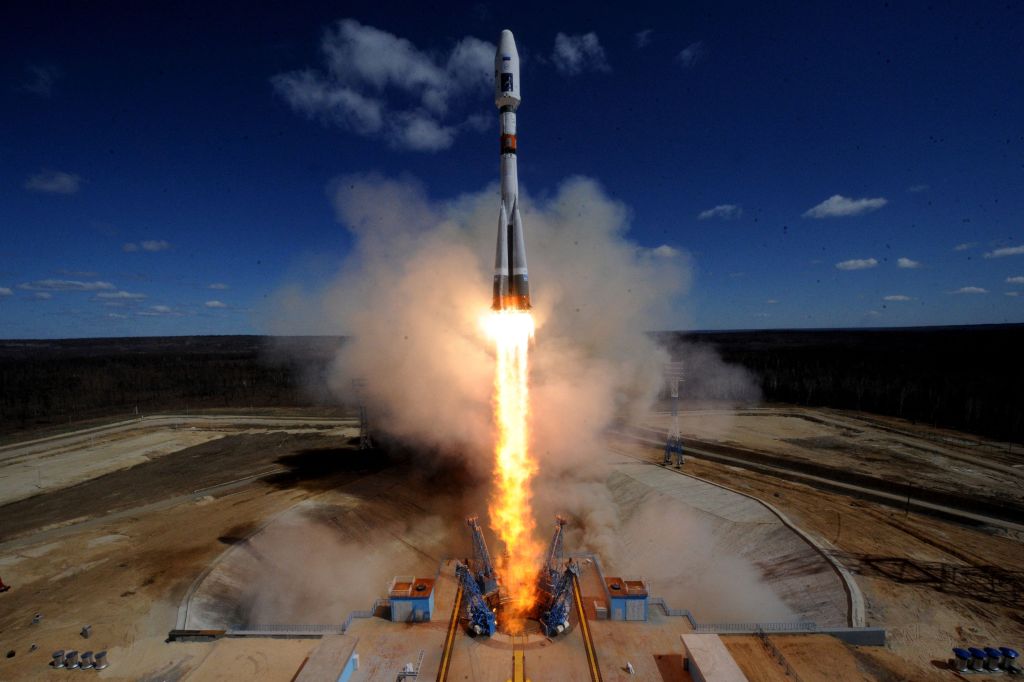Future astronauts could pave roads, launchpads, and other infrastructure on the Moon by melting lunar dust with focused laser-like sunlight to manufacture solid tiles, according to a new study.
Scientists have now road-tested this technique in the lab by zapping fake lunar soil, known as simulant, with a laser designed to imitate sunlight, resulting in a new class of interlocking triangular structures. This approach could help mitigate the dangers posed by hazardous lunar dust particles to astronauts and equipment, while also minimizing the amount of manufacturing supplies that would need to be hauled from Earth.
Videos by VICE
The Moon is about to get a lot busier, as multiple missions from all around the world gear up for a new explosion of lunar exploration. The NASA-led Artemis program aims to return astronauts to the Moon’s surface within a decade, and China is formalizing its own plans for a crewed lunar landing. In the meantime, a host of other nations and private companies are working to place robots on the Moon in the coming years; India recently became the fourth nation in history to pull off this feat with its Chandrayaan-3 mission.
If our presence on the Moon continues to expand, missions will need to develop more complex infrastructure to support surface operations. Now, researchers working on a European Space Agency (ESA) project called PAVER have demonstrated that the building blocks of lunar roads, among other structures, could be made by concentrating sunlight onto lunar dust with a lens of approximately 2.37 square meters (25 square feet).
The PAVER team “proved the viability of this technique for manufacturing large samples with interlocking capabilities in-situ that can be fabricated directly on the lunar surface and arranged for paving applications” and added that “the relatively small size of the required equipment and the simplicity of the system would be an advantage for the use of this technology in future missions on the Moon,” according to a study published on Thursday in Scientific Reports.
“The nature of lunar dust can be a drawback for lunar exploration,” said Juan‑Carlos Ginés‑Palomares, a lead author of the study and an assistant researcher at the Technical University of Berlin, in an email to Motherboard. “Many particles have sharp edges (due to the absence of erosion agents on the Moon, like wind or water) and are generally electrically charged (which makes it especially ‘sticky’). It can cause damage to lunar landers, spacesuits, and human lungs if inhaled.”
“We wanted to contribute to overcome the problems linked to lunar dust,” he noted. “Manufacturing roads is a way to avoid the formation of dust clouds while facilitating the movement of vehicles and rovers.”
Of course, paving roads on the lunar surface is easier said than done. Given the extremely high cost of spaceflight, it is not feasible for mission planners to just load up a spacecraft with heavy bricks to lay on the Moon. Instead, researchers have to come up with creative ways to utilize materials that are already available on the lunar surface.
To that end, ESA launched the PAVER project to develop some of these so-called “in situ resource utilization (ISRU)” technologies with materials here on Earth. The collaboration involved scientists from the Technical University of Clausthal, Germany’s Federal Institute for Materials Research and Testing (BAM), the Liquifer Systems Group in Austria, and Aalen University, which is where Ginés‑Palomares was based during this research.
“TU Clausthal and BAM (Germany) already had extensive knowledge of the use of high power lasers for the manufacture of large quartz crucibles by sintering quartz powder,” Ginés‑Palomares explained. “The idea was to use this equipment for application on the Moon. Thus the TU Clausthal team joined forces with the Aalen University team (Germany) and Liquifer (Austria) because of their previous knowledge in the fabrication of parts from lunar material by solar sintering.”
Together, the researchers pioneered a technique for melting EAC-1A, a lunar simulant developed by ESA, using a carbon dioxide laser that mimicked the effects of focused solar radiation. Through trial-and-error, they were able to produce robust triangular tiles measuring about ten inches across and about a half-inch wide.
The team concluded that the blocks could be neatly packed together to make critical infrastructure on the Moon. Ginés‑Palomares said it was difficult to predict when this technique might actually be tested on the lunar surface, given all the variables surrounding the funding, organization, and priorities of space missions. However, he estimated that it could be technically feasible to demonstrate the approach by the 2030s.
“From the technological point of view, the simplicity of the proposed equipment suggests that a prototype of this technology could be tested in the short term, following the trail of the launches proposed for Artemis and other exploration programs,” Ginés‑Palomares said. “Thus, 10 years may be a reasonable time frame.”
In the meantime, the researchers plan to continue working toward paved lunar roads by subjecting their tiles to conditions similar to those that they would encounter on the Moon.
“We already considered some of the next steps of this project: firstly, the performance of the tiles under a rocket thrust should be tested,” Ginés‑Palomares said. “Then, the manufacturing in low gravity conditions should be addressed; this can be done in a parabolic flight campaign, for instance. This study has been conducted under terrestrial atmospheric and gravity conditions. Testing this equipment in lunar conditions on Earth (specifically, absence of air and lunar gravity) will be an important step towards bringing this and similar technologies to the Moon one day.”
“Of course it is a great thrill for us to be able to work on this type of project,” he concluded. “To think that we are contributing to the next steps of human exploration of the Moon, the dream of so many of us, makes us work with high motivation. That is why we would like to thank the European Space Agency, which has funded this project and is making the future of lunar exploration possible.”




